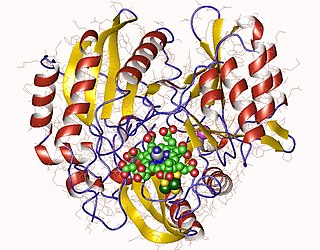| berberine reductase | |||||||||
|---|---|---|---|---|---|---|---|---|---|
| Identifiers | |||||||||
| EC no. | 1.5.1.31 | ||||||||
| Databases | |||||||||
| IntEnz | IntEnz view | ||||||||
| BRENDA | BRENDA entry | ||||||||
| ExPASy | NiceZyme view | ||||||||
| KEGG | KEGG entry | ||||||||
| MetaCyc | metabolic pathway | ||||||||
| PRIAM | profile | ||||||||
| PDB structures | RCSB PDB PDBe PDBsum | ||||||||
| Gene Ontology | AmiGO / QuickGO | ||||||||
| |||||||||
Berberine reductase (EC 1.5.1.31) is an enzyme that catalyzes the chemical reaction
- (R)-canadine + 2 NADP+ berberine + 2 NADPH + H+
Thus, the two substrates of this enzyme are (R)-canadine and nicotinamide adenine dinucleotide phosphate ion, whereas its 3 products are berberine, nicotinamide adenine dinucleotide phosphate, and hydrogen ion.
This enzyme belongs to the family of oxidoreductases, specifically those acting on the CH-NH group of donors with NAD+ or NADP+ as acceptor. The systematic name of this enzyme class is (R)-tetrahydroberberine:NADP+ oxidoreductase. This enzyme is also called (R)-canadine synthase.




